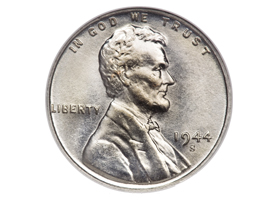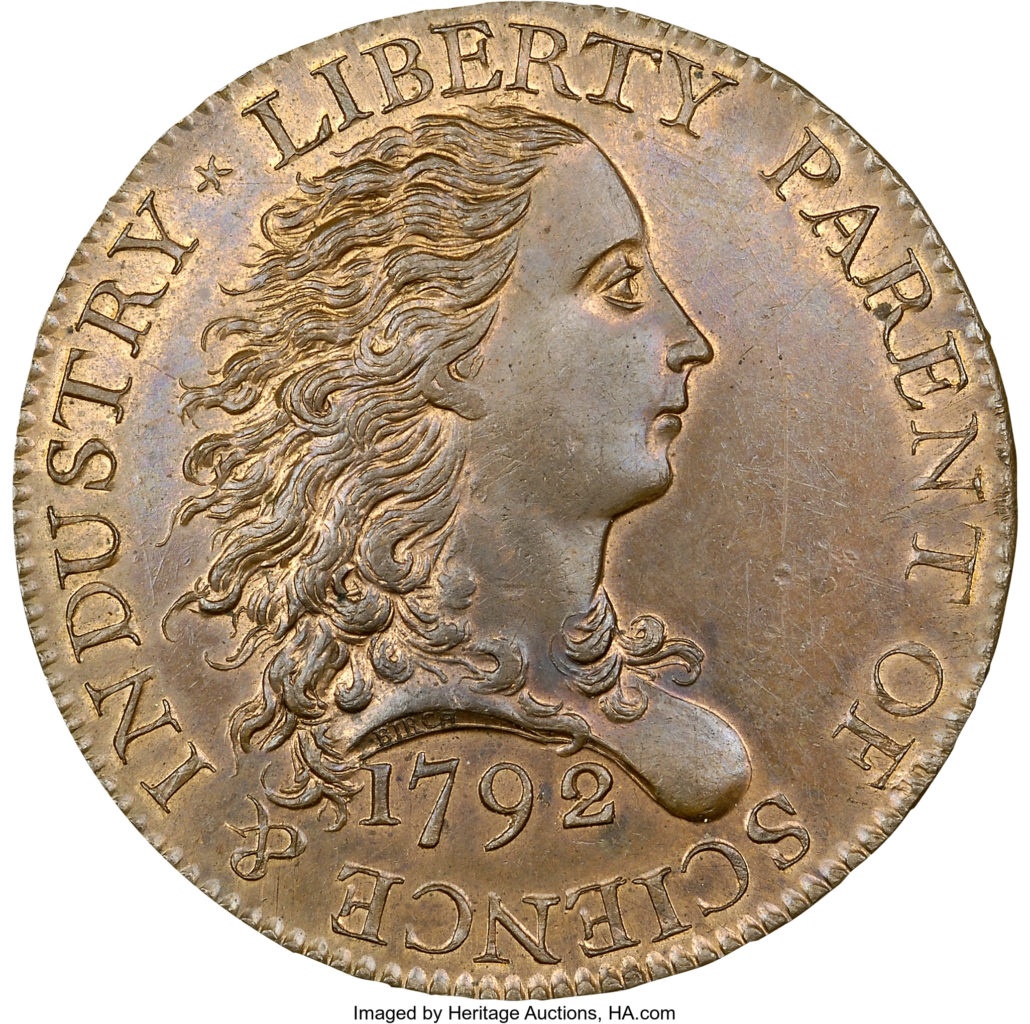
NEW YORK — While some people detest pennies in their pocket change, the penny (or more accurately called by numismatists, a cent) has a storied part of America’s coinage history. The cent is the longest continuously-produced US coin series, and early or historic pennies can also often be worth thousands of times their face value.
While the cent has changed little over the years, there are some interesting variations, including wheat pennies, which featured two ears of wheat on the reverse side until 1959 at which time the Lincoln Memorial was engraved on the reverse.
The cent traces its history to April 2, 1292, the day that the US Congress enacted the Coinage Act and set forth the first national mint in Philadelphia. Other mints later opened in San Francisco, Denver and West Point.
An interesting fact about the cent is that it is the only American coin currently in circulation that shows the sitter facing to the right; Kennedy, Washington and Eisenhower are all shown facing left on their respective coins. All cents were struck at the Philadelphia Mint until 1908, when they were first struck at a branch mint (San Francisco).
Among the most valuable cents is the 1792 Birch-pattern cent (shown at top), of which there are two known surviving examples. One sold at Heritage Auctions for $2.58 million in August 2016, setting an auction record price. Coveted for its experimental design, this cent was originally proposed to have the bust of George Washington, but the idea of featuring a sitting president was so controversial, a bust of Liberty with her hair flowing behind her was instead used, along with the words “Liberty Parent of Science & Industry.”
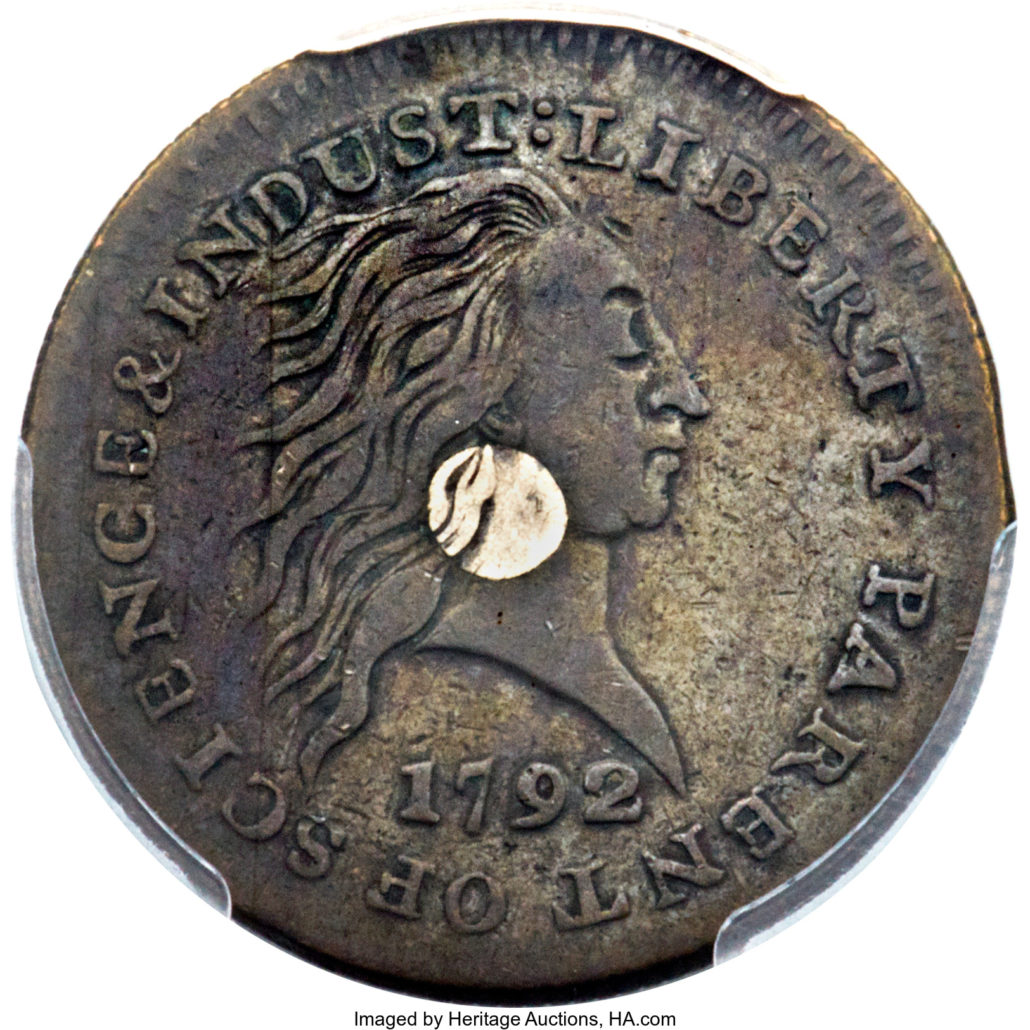
Another standout cent also struck in 1792 was a Silver Center Cent (above), given its moniker for a small silver plug added to make its inherent value the same as its face value. Thomas Paine designed this concept that Thomas Jefferson eagerly championed in a letter to President George Washington. Around the size of today’s quarter, the copper cent was much larger than most cents. Heritage sold an example for $352,500 in 2016.
Asked if certain years are more valuable than others, Jacob Lipson, a numismatic cataloger at Heritage Auctions, replied that key dates include, but are are not limited to, any cent struck in the first year, 1793; as well as the 1856 Flying Eagle cent, the 1877 Indian Head cent, the 1909-S Indian Head cent, the 1909-S VDB Lincoln cent and the 1914-D Lincoln cent.
“Any cent dated prior to 1959 is worth a premium,” said Brian Koller, also a numismatic cataloger at Heritage Auctions. “Those who collect from pocket change should be on the lookout for 1992-D cents with the AM in AMERICA closely spaced,” he said, noting that Heritage auctioned a lightly circulated 1992-D Close AM cent for $3,290 in January 2013.
While the cent was traditionally made of copper, this has not always been the case. Copper was used from 1793 through the end of the large-cent era in 1857, Lipson said. Copper-nickel was used for Flying Eagle cents (regular issues of 1857 and 1858, and the pattern of 1856), and for the first few Indian Head issues (1859 to mid-1864). “A bronze alloy (.950 copper, .050 tin and zinc) was used for the remainder of the Indian-cent series and the first part of the Lincoln series (1909-1962), with the exception of 1943, when cents were famously struck in steel,” he said. They are known as “steelies” and were made during the period that the US government rationed copper and zinc for the war effort. Tin was removed from the alloy in 1962, and in 1982 the Mint switched to the current copper-plated zinc composition.
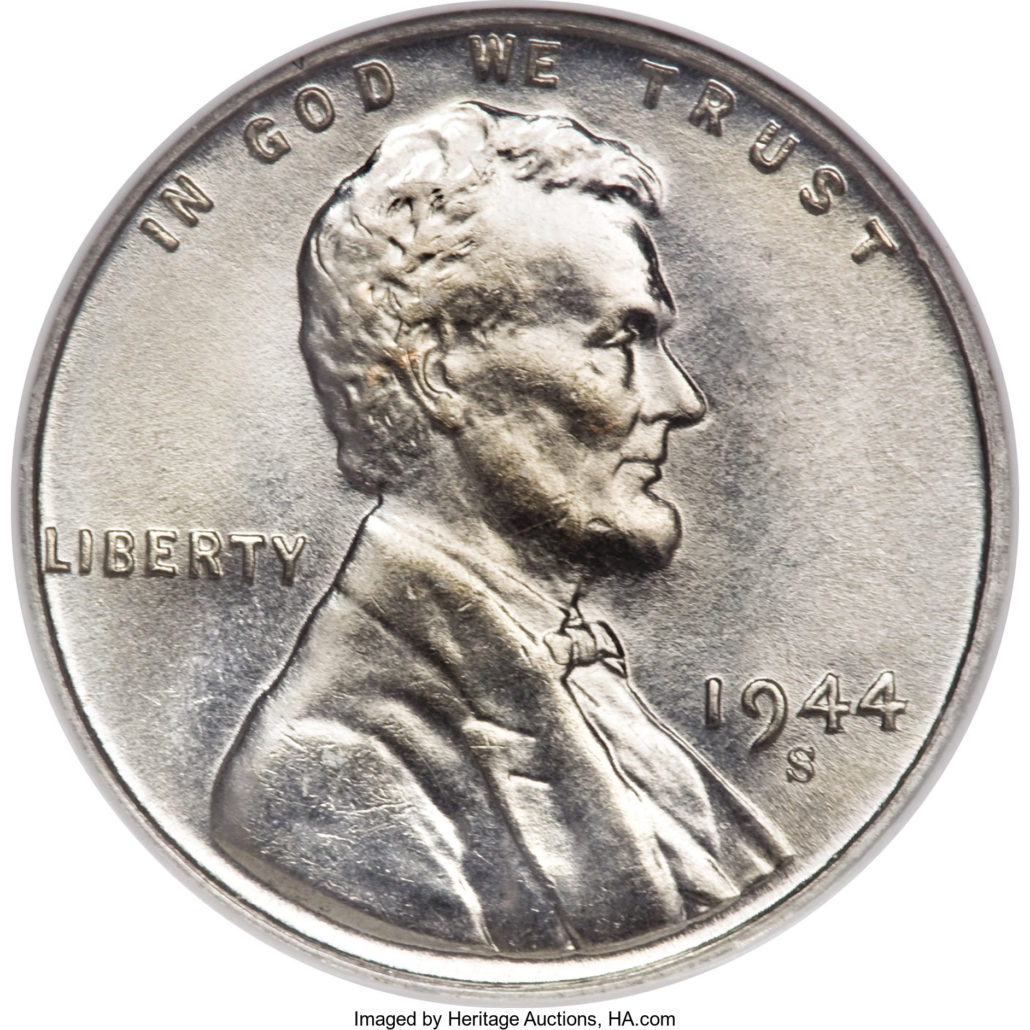
Like the “Inverted Jenny” airplane stamp, famously printed upside-down in 1918, coin mistakes have sometime happened at the US Mint. A 1944-S cent on a zinc-plated steel planchet (example above) is one of the most notorious. Struck at the San Francisco Mint in 1944, these coins are thought to have been created when a planchet for a 1943 cent somehow became sandwiched between 1944 dies. Two are known to have survived. Heritage sold one for $373,750 in 2008. Made a year earlier, a 1943 Lincoln cent was to have been a “steelie,” but an error caused it to be made of bronze left over from 1942. The coin sold in 2017 for $282,000.
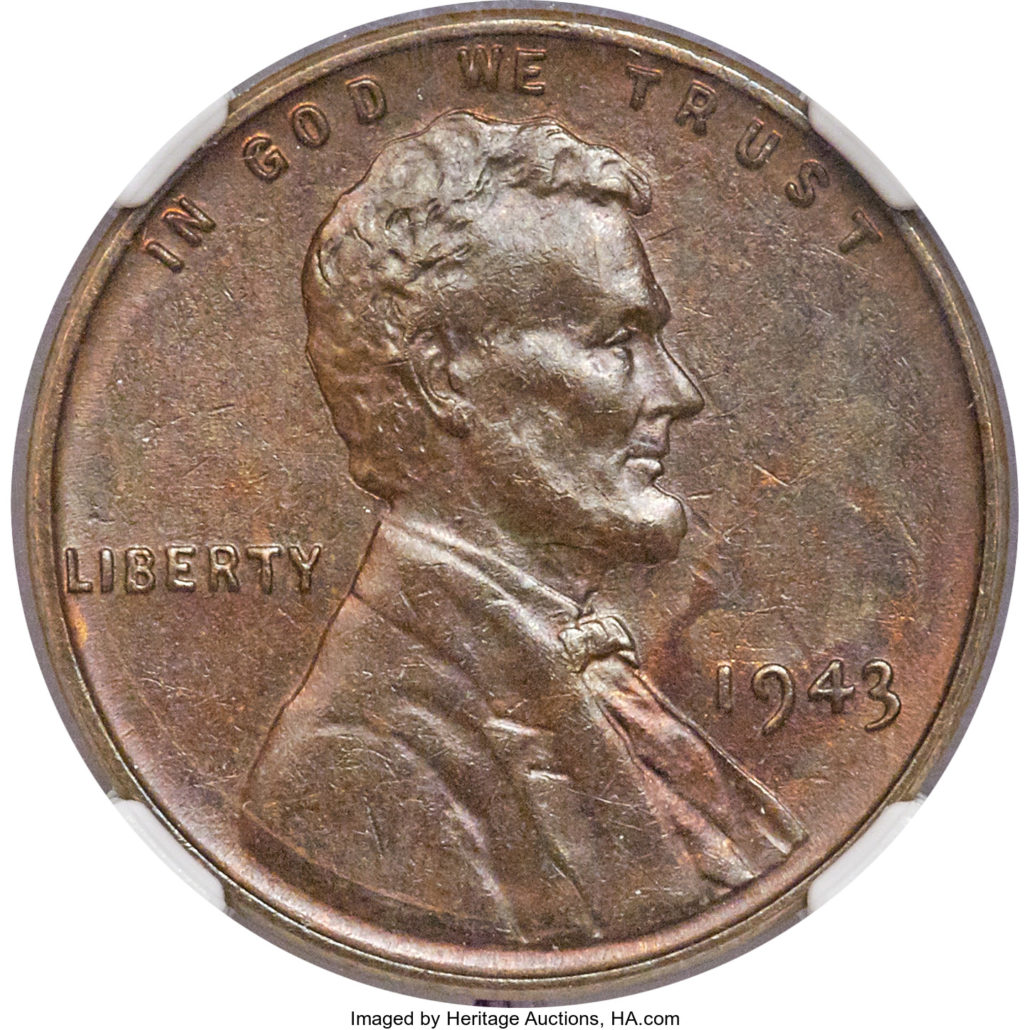
While the cent has mostly been made from metal, an experimental glass cent was produced in 1942 as a possible alternative to copper during the war effort. A Tennessee firm created the amber glass cent, which is a desirable rarity to collectors. An example sold at a Heritage auction in 2017 for $70,500.
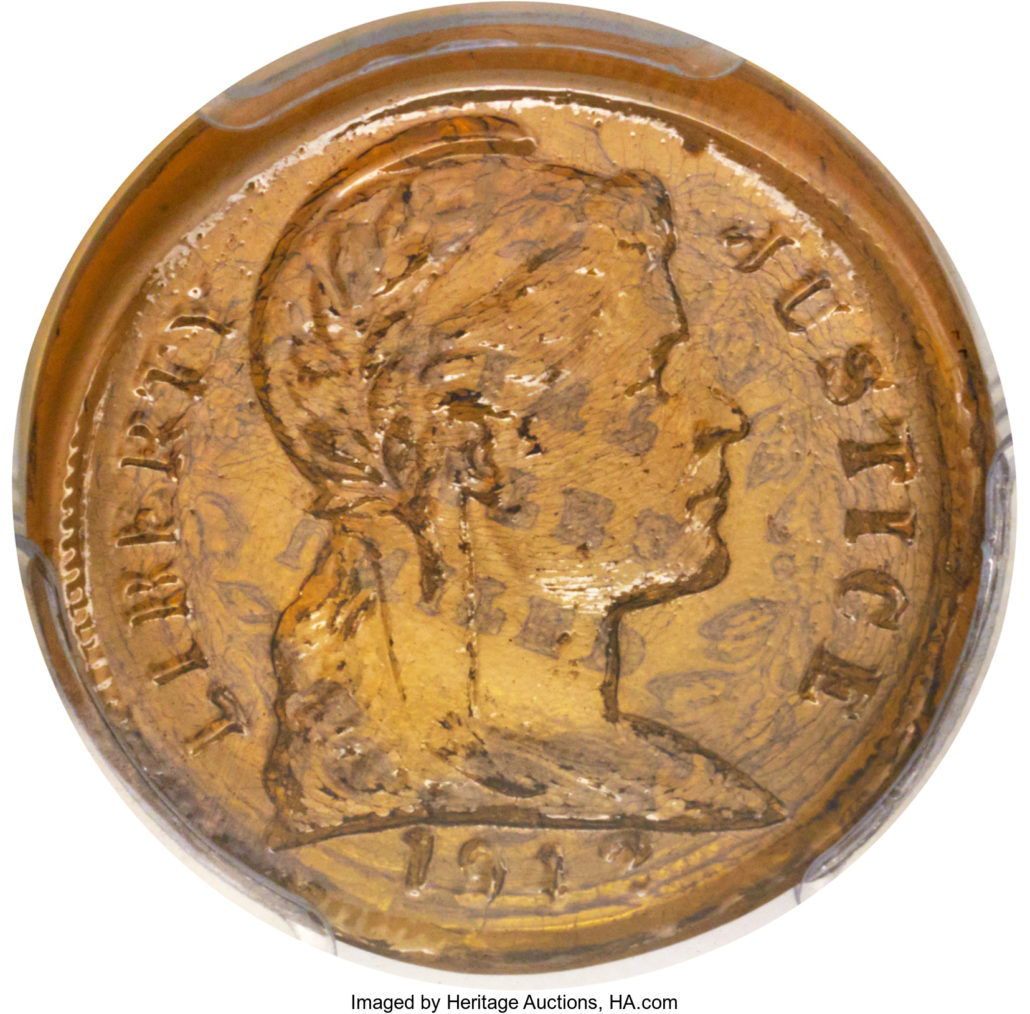
Proper storage is an important part of maintaining one’s collection. “Do not attempt to clean, recolor, or otherwise improve your coins” Koller said. “Do not store coins in holders that contain PVC.”
Lipson offered buying tips for new collectors, including the usual caveat of buying from reputable dealers. “Make sure to read up on what you are going to collect before you start buying,” said Lipson. “Buy the best quality you can afford. Collect what you enjoy. Try to get a sense of what things buy and sell for. Get in touch with an experienced professional who can guide you through the learning process.”
Click to view coin auctions on LiveAuctioneers.
# # #


